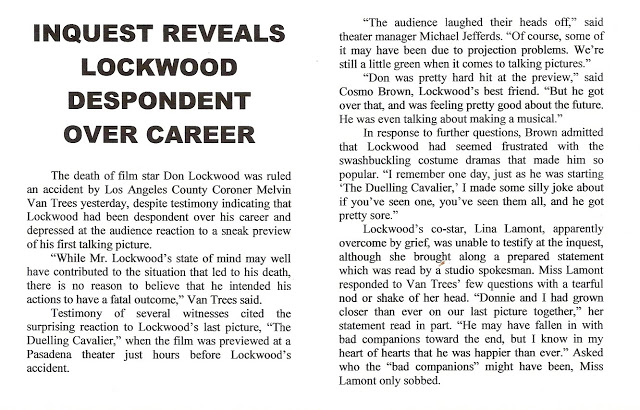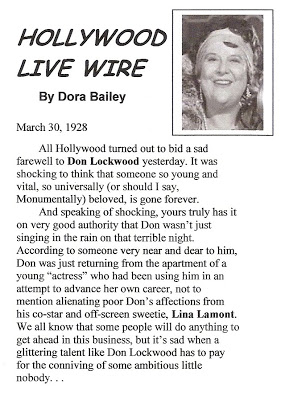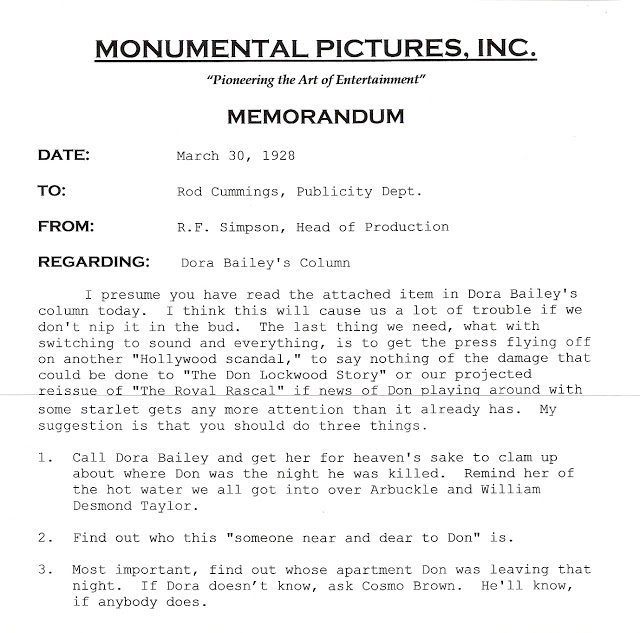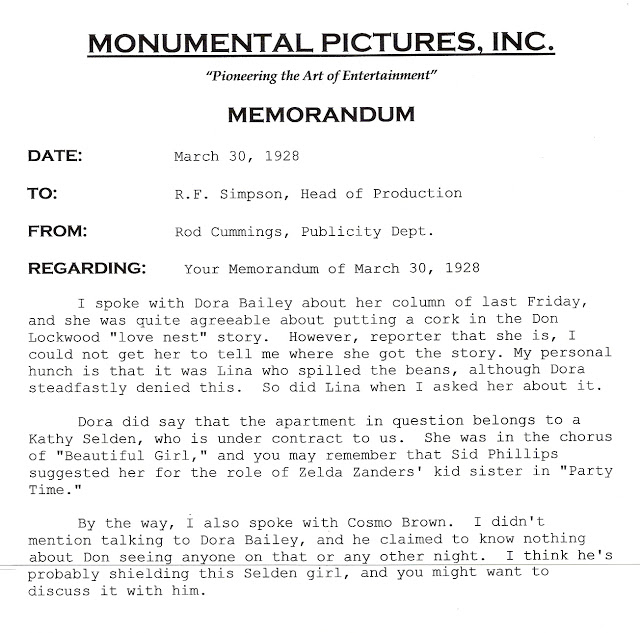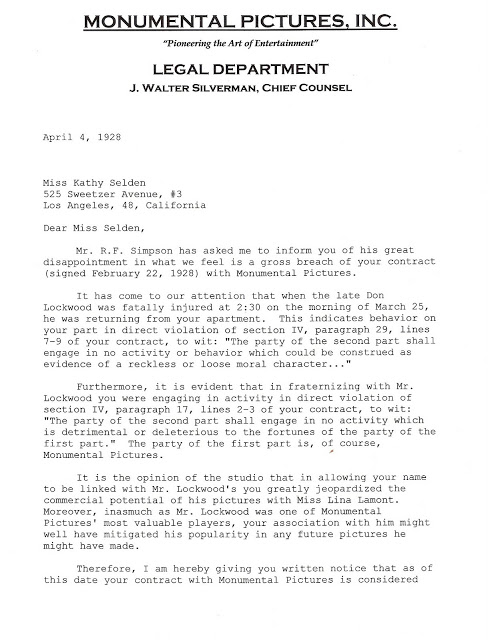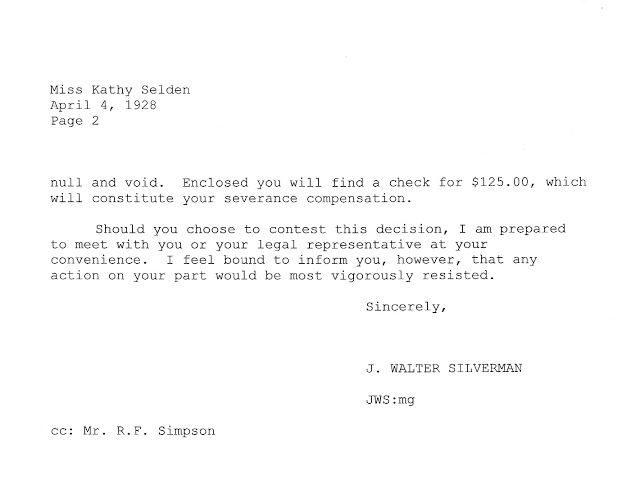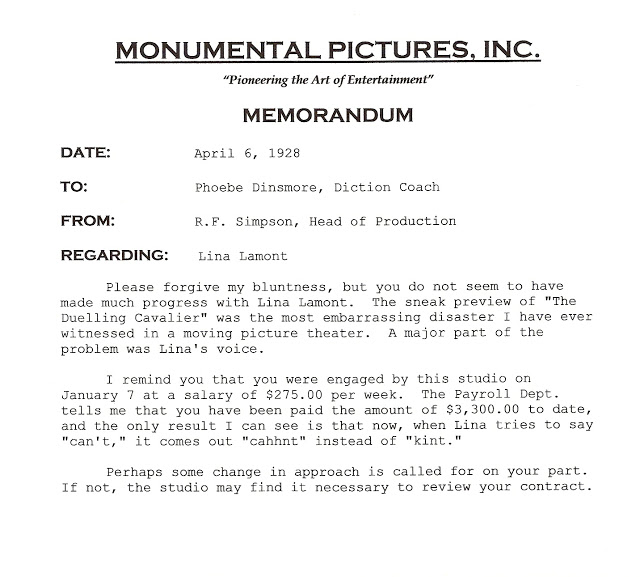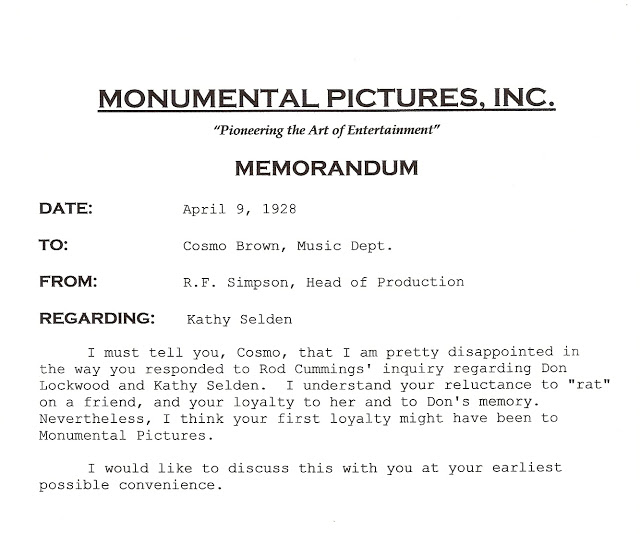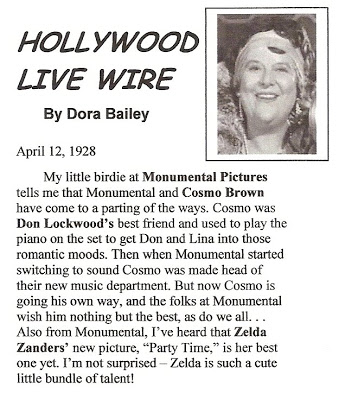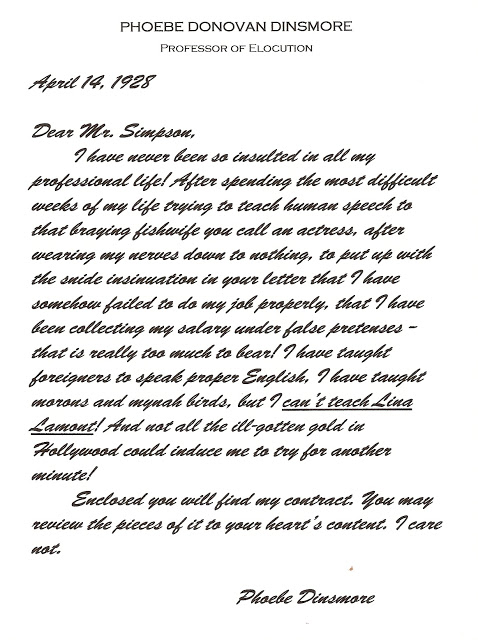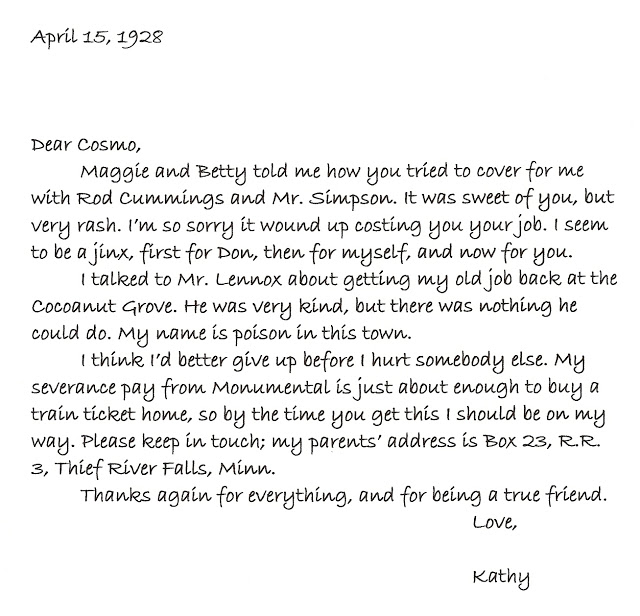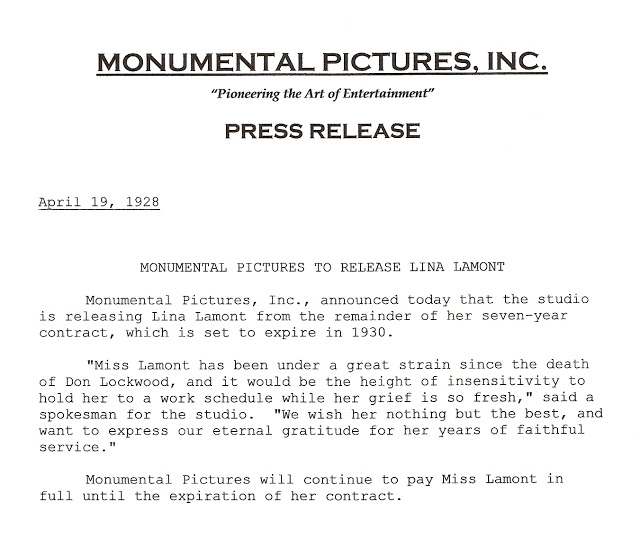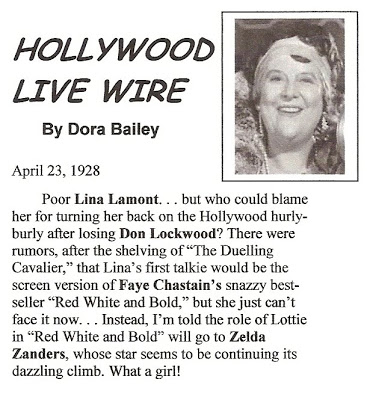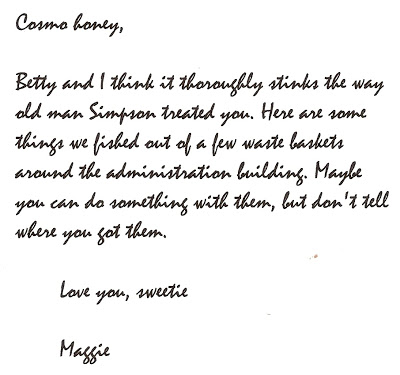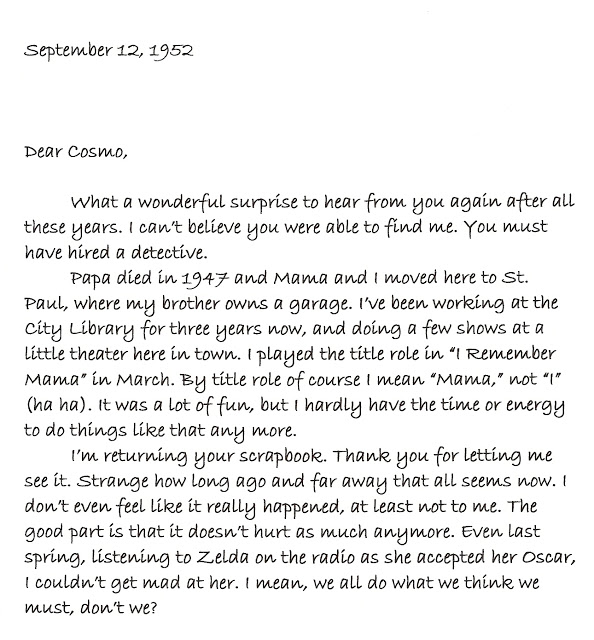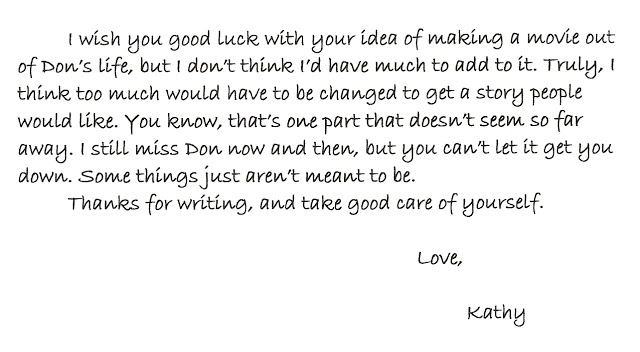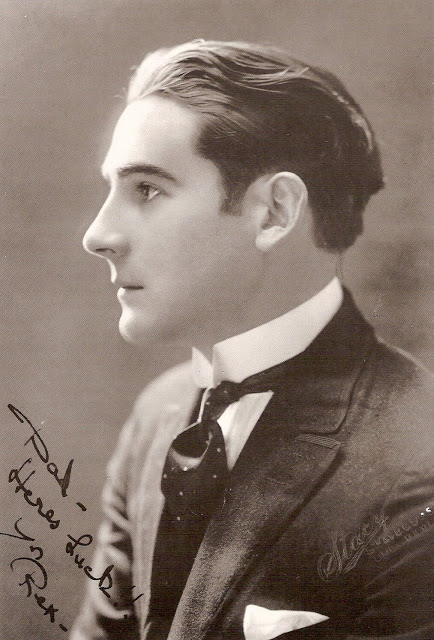Hollywood had two Rex Ingrams. Maybe someday I’ll write about the fine African American actor who played De Lawd in The Green Pastures, Lucifer Jr. in Cabin in the Sky and the Genie in 1940’s The Thief of Bagdad. But today I’m writing about the other Rex Ingram, who was born Reginald Ingram Montgomery Hitchcock in Dublin, Ireland on January 15, 1893.
I’ve been wrestling with this post much too long, trying to get some feeling for what this man was like beyond what we can see in his movies: an artist’s sense of composition, a tasteful eye for the telling detail, a delicate touch with actors, and a sure hand with both intimacy and epic sweep.
There’s only one biography of him, Rex Ingram: Master of the Silent Cinema by the late Liam O’Leary, and unfortunately it’s not much help. I know it sounds presumptuous for an armchair historian like me to pass judgment on a man like O’Leary — actor, director, archivist, official with both the Irish Film Society and London’s National Film Archive. But the fact is, his biography of Ingram is long on facts and short on insight, and it raises more questions than it answers.
Did Ingram ever graduate from Yale, where he studied sculpture? Michael Powell, whom Ingram inspired to become a movie director himself, says Ingram was a Yale grad, but O’Leary’s book isn’t clear. If Ingram didn’t graduate, did he drop out to work in pictures for the Edison Company, or did he flunk out and turn to pictures when he needed a job? He was obviously intelligent even in his youth, but he wouldn’t be the smartest student who ever grew bored and careless in his studies. Either way, O’Leary doesn’t say; one moment Ingram is at Yale, the next at Edison.
We know Ingram loathed Louis B. Mayer (he was neither the first nor the last to do that), and seethed when Mayer became his boss (Ingram had been Metro’s star director before the merger with Goldwyn and Mayer that formed MGM). But why? Given the effect on Ingram’s career, and possibly on Hollywood itself, it would be useful to have more of an inkling why Ingram couldn’t work with Mayer while directors like Clarence Brown and Sidney Franklin could.
Did Ingram ever convert to Islam, or didn’t he? It’s reported in Wikipedia that he did, along with a claim that he co-directed the silent Ben-Hur (which he didn’t). O’Leary cites the periodic allegations, and Ingram’s demurrals, then finally concludes “there may have been something to it.” A definite maybe.
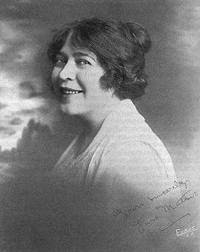
Most frustrating of all, what exactly was Ingram’s relationship with June Mathis? This remarkable woman was one of the earliest power figures as Hollywood entered the 1920s. A writer with ambitions to produce, she went on to do just that (or “supervise,” as the jargon of the day had it) and might have risen even higher if she hadn’t died suddenly of a heart attack in 1927, age 40 (or 38, or 35, depending on whom you believe as to when she was born). There were rumors at the time that Mathis and Ingram were romantically involved, and that he threw her over when he eloped with Alice Terry during shooting of The Prisoner of Zenda in 1921. If true, that could explain the alienation between them that festered after The Conquering Power that same year, causing Ingram later to miss out on his dream project, Ben-Hur, when production supervisor Mathis pointedly gave the director’s megaphone to somebody else.
But there’s an alternate explanation, too: that the two clashed over Ingram’s direction of Mathis’s protege Rudolph Valentino in Conquering Power, the follow-up to The Four Horsemen of the Apocalypse, the picture in which she and Ingram had launched Valentino to stardom. Mathis believed that Ingram was being high-handed with Valentino, while Ingram believed that he was directing the same way he always had, but that Valentino’s sudden fame had gone to his head and made him too big for his britches. Either story makes sense — the woman scorned or artistic differences — and it would be nice to know which is closer to the truth.
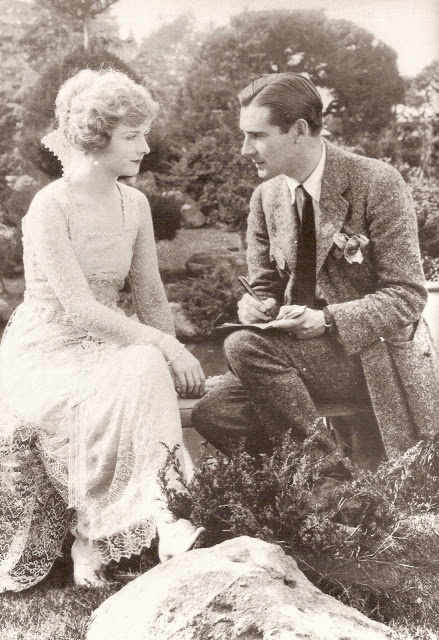 |
| Ingram and Alice Terry at the time of their marriage in November 1921 |
Liam O’Leary became good friends with Alice Terry, Ingram’s widow, and she was still alive in 1980 when O’Leary’s biography of Ingram was published. I suppose it’s only natural that he might be too tactful to explore any rumors about Terry’s late husband and a woman dead more than fifty years, but you don’t dispel gossip by ignoring it. O’Leary does concede that Mathis may well have been in love with Ingram (as she clearly was with Valentino), but insists that Rex only had eyes for Alice; even Ingram’s first (apparently unhappy) marriage is dispensed with in two hasty paragraphs.
In any event, Mathis was there to give Ingram’s career a huge boost by choosing him to direct The Four Horsemen, her pet project at Metro, from the international bestseller by Vicente Blasco Ibañez. Ingram had been building a name for himself for some time, but that was the picture that catapulted him to Hollywood’s front rank.
Ingram began in movies in 1913 at the Edison Co. studio in the Bronx. He did a little bit of everything in those unregimented early days — advising on intertitles, set decoration, painting portraits of Edison’s prominent players, pitching in on scenario writing, and so forth. With his matinee-idol good looks (Erich von Stroheim said he looked like a Greek god), it was inevitable he’d end up on screen as well, but he was a self-conscious actor — and never much interested in that side of the camera anyway. After a few months at Edison he went to Vitagraph as an actor and writer for a year or so, then in June 1915 on to the Wm. Fox Film Corp. as a writer and assistant director. It was about this time that Rex Hitchcock dropped his last two names and became Rex Ingram for the rest of his life. After a year at Fox, he moved on to Carl Laemmle’s Universal, where he finally got his first opportunities to direct at the young age of 23 (like William Wyler nine years later). In 1917, When Uncle Carl moved his production operations to the new Universal City in Hollywood, Ingram went west as well.
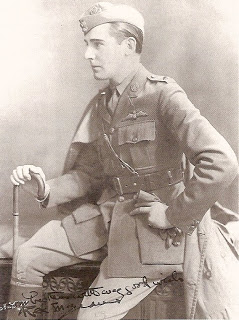
In 1918, after America’s entry into World War I, Ingram enlisted in the Royal Canadian Flying Corps (he was still technically a British subject, his U.S. citizenship papers not having been finalized yet). But his service wasn’t long; he was honorably discharged after only ten weeks, possibly as a result of injuries incurred in a plane crash during training. In any case, in January 1919 he was back in Hollywood in very poor health, nearly broke, and out of a job. For months he was dependent on the kindness of friends; he was able to find some work as a set decorator at Lasky Studios, but it wasn’t easy to hold on even to that while he convalesced from whatever had washed him out of uniform.
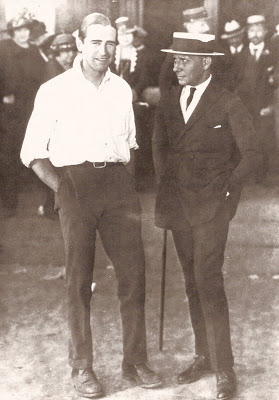
It probably didn’t help his morale to return to Universal seeking his old job back, only to be told that the vacancy had been filled, and by the Vienna-born Erich von Stroheim — the “enemy” Ingram had gone off to fight. Stroheim went out of his way to be cordial when he found Ingram lurking around the set (“What’s that sonofabitch doing? He’s got my job!”); Stroheim brought out a bottle of scotch and after ten or twelve drinks “we were very palsy-walsy.” The friendship took hold and endured for the rest of Ingram’s life; Stroheim once called Ingram “the world’s greatest director.”
In short order Ingram’s health and his job prospects improved. He managed after all to pick up a couple of directing jobs for Universal (including helming a screen test for a hopeful newcomer named Rudolph Valentino, who impressed Ingram as having possibilities), then in late 1919 landed a directing berth at $600 a week with theater magnate Marcus Loew, who had just acquired the Metro Pictures Corporation to supply product for his chain of cinemas.
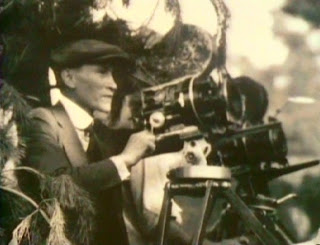
And this is where the Rex Ingram story really begins. His job at Metro brought him into contact with two people who had an incalculable impact on Ingram’s growing stature as an artist and as a maker of commercial hits. The first was John F. Seitz, the cameraman on Shore Acres, the first picture Ingram directed at Metro (though not the first released). Seitz was no inconsiderable artist himself; his career extended to 1960, and he just might be the greatest cinematographer of the sound era who never won an Academy Award (he was nominated seven times). He had begun his career as a lab assistant, so he knew how to manipulate not only lighting on the set, but the film itself in the developing process. Director Byron Haskin recalled, “Seitz was one of the true geniuses of filmmaking. Not just a photographer, he was tremendously imaginative, tremendously impressive to me as a young cameraman, and to most of the other boys in the business at the time.” Seitz and Ingram connected on a joined-at-the-hip level. They made a dozen pictures together in six years; Seitz understood Ingram’s pictorial sense because he shared it, and had the craftsmanship to interpret it in images that are subtly lit and strikingly textured even now, 75 and 80 years on.
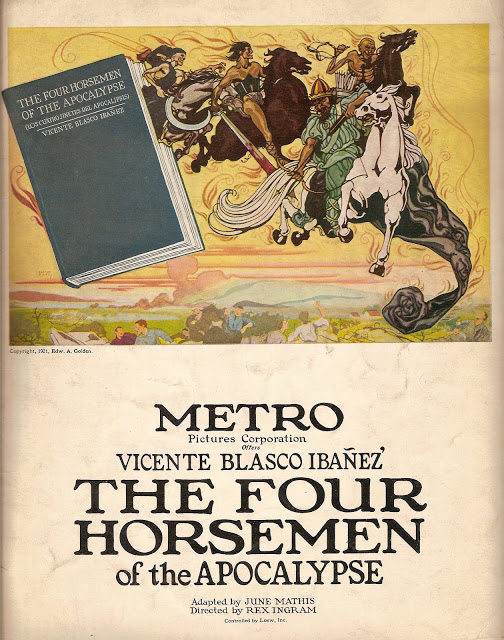
The other person, of course, was June Mathis. She had been impressed with Ingram’s work on his first two films at Metro and asked for him to direct The Four Horsemen of the Apocalypse, which she was shepherding to the screen after prodding Metro to acquire the rights. Spanish author Vicente Blasco Ibáñez’s novel had been a worldwide bestseller in 1918 and ’19, and rumor had it that Fox was willing to pay $75,000 for movie rights. Metro studio chief Richard Rowland, at Mathis’s urging, won the bid with a $20,000 advance against ten percent of the profits.
The Four Horsemen told the story of two branches of an Argentine family that diverge after the death of the patriarch around 1900. One daughter returns with her German husband to his fatherland, the other with her husband to his native France, and their sons end up on opposite sides in the Great War. Early scenes set in Argentina were filmed on the 250-acre Gilmore Ranch in what is now Los Angeles’s Fairfax District; elaborate action scenes set in a French village caught in the Battle of the Marne were shot in the hills behind Griffith Park, overlooking what are now Burbank, the Warner Bros. Studios and Forest Lawn. The visionary/symbolic scenes of the Four Horsemen themselves (Conquest, War, Pestilence and Death) were staged on Pico Boulevard, then little more than a country lane running from the seaside village of Santa Monica into downtown L.A. Shooting lasted from July to December 1920, at a cost of $1 million, 40 times the cost of the average Metro picture to date.
The result of Ingram, Mathis and Seitz’s efforts opened in New York on March 6, 1921, and was a sensation even greater than the novel that inspired it. The Four Horsemen of the Apocalypse was the first box-office blockbuster to come from the Hollywood studio system. Marcus Loew made enough profit off this one picture to reimburse him for the entire cost of purchasing the studio. Richard Rowland bought out Blasco Ibáñez’s interest in the movie for $170,000 (thereby saving Metro $40,000). June Mathis became the most powerful woman in Hollywood. And Rex Ingram, just turned 28, was hailed as the peer of D.W. Griffith and Cecil B. DeMille.
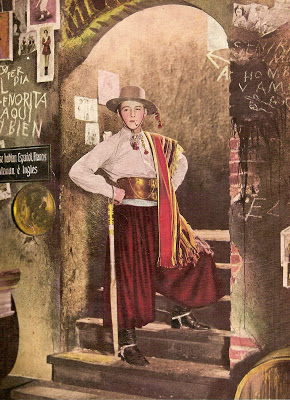
The biggest sensation of The Four Horsemen, as all the world knows by now, was 25-year-old Rudolph Valentino as Julio Desnoyers, the idle playboy whose belated patriotism to his father’s France leads to his death in the trenches of the Western Front. Mathis favored him for the role over a number of better-known actors, and Ingram — no doubt recalling that screen test at Universal — readily agreed. Valentino justified their faith in him, but as I said before (and assuming there was nothing more personal between Mathis and Ingram than their professional work together), he may have caused the rift that erupted between them. The Conquering Power was Ingram’s last collaboration with Mathis. The script for his next picture, Turn to the Right was taken over from Mathis by Mary O’Hara (later a novelist and author of My Friend Flicka). We don’t know why; had Mathis and Ingram already washed their hands of each other?
The Four Horsemen was Ingram’s biggest artistic and commercial success, but it wasn’t his only one. The Conquering Power could hardly miss, with Valentino starring. Turn to the Right was indifferently received (and led to rumors that Mathis had been the real genius behind Valentino), but The Prisoner of Zenda (1922) and Scaramouche (’23) — both with Ramon Novarro, a Latin Lover rising on Valentino’s coattails — cemented Ingram’s prestige. (Another picture, 1922’s Trifling Women, is now apparently lost.)
For his next picture, Ingram persuaded Metro to let him shoot on location: Tunisia for exteriors and a Paris studio for interiors. The Arab was intended to do for Novarro what The Sheik had done for Valentino (which, to a lesser extent, it did). Although Ingram did not stay away from Hollywood for good (he died there in 1950), he never worked there again. He moved his operations to the Victorine Studios in Nice, on the French Riviera, and his remaining five pictures were all made there.
This is where we enter the realm of speculation, wondering why Rex Ingram, sitting on top of the world, preferred to work 6,000 miles away from his studio’s base of operations. “As we have seen,” Liam O’Leary writes, “Ingram had longed for the day he could get away from Hollywood, its coteries, gossip, and inevitable scramble for power, increasing bureaucracy and production controls.” With all due respect, by that point in O’Leary’s biography, we’ve seen nothing of the kind. So what did prompt Ingram to this quixotic drive to create a New Hollywood in the south of France? I think the straw that broke this Irish-American camel’s back was Ben-Hur.
Lew Wallace’s book had been the best-selling novel of the 19th century, and a lavish stage production in 1900 had toured the U.S. for twenty years. It was only a matter of time before a movie would be made. In fact, strictly speaking, one already had been: a cheap and short quickie in 1907, produced by the Kalem Company without bothering to consult either the Wallace estate or Klaw and Erlanger, the stage producers. That sneaky piece of work had resulted in a landmark copyright lawsuit, and the rights were jealously guarded thereafter. Still, this was a plum property, and sooner or later someone was going to pick it. Ingram yearned to direct Ben-Hur, and had it written into his contract that if Metro finally landed the rights, he would get the job; if another studio did, he would be loaned out to do it. In the end, the Goldwyn Company got the rights, with June Mathis in charge of production and writing the script. After The Four Horsemen, Zenda and Scaramouche, Ingram was the obvious front-runner, but Mathis froze him out; she gave the assignment to Charles Brabin.
By all accounts, Ingram went into a serious depression at missing out on what at the time promised to be one of the biggest pictures of all time; even casual acquaintances noticed a distinct change in his character. It was about that time that he went to North Africa to shoot The Arab, and while he was there another blow fell. His home studio Metro merged with the Goldwyn Company, and Louis B. Mayer came aboard to be head of production at the new conglomerate.

We may not know exactly why Ingram despised L.B. Mayer — their paths don’t seem to have crossed in Hollywood — but we know he did. Ingram had left for Tunisia an employee of the Metro Pictures Corporation; now suddenly he was working for Metro-Goldwyn-Mayer. He had a new clause inserted into his contract: he would answer to Marcus Loew and Nicholas Schenck, not Mayer; his pictures would have the billing, “Metro-Goldwyn presents a Rex Ingram production.” He literally did not want Mayer’s name mentioned in the same breath with his own.
With the MGM merger, Loew’s Inc. had inherited Ben-Hur, shooting in Mussolini’s Italy at the same time Ingram was in Tunisia with The Arab. By mid-1924 the Ben-Hur production had degenerated into a shambling fiasco (for the juicy, fascinating details, see Kevin Brownlow’s The Parade’s Gone By). Mayer and Irving Thalberg assessed the situation, and were appalled. June Mathis, Charles Brabin and leading man George Walsh were all summarily fired. And at this point, evidently, Rex Ingram missed out on directing his dream picture once again. O’Leary reports that Mayer invited Ingram to take over the production, “but Ingram made so many conditions that Mayer refused to consider them.” What conditions? For that matter, if Ingram was so depressed when he lost out the first time, why were there any conditions? I suspect one condition might have been that “Metro-Goldwyn” business; Ingram wanted Ben-Hur, but not if it was to be a Metro-Goldwyn-Mayer picture. Also, Ingram may have wanted to shoot at Victorine, while Mayer may already have decided to bring this runaway disaster home to Hollywood where he could keep an eye on it; besides, an epic like this could never be done at Ingram’s quaint little boutique studio on the Mediterranean coast.
This double miss is one of the great what-ifs of Hollywood. As good as the 1925 Ben-Hur is — and it’s very good indeed, far superior to its more famous remake — it surely would have been even better in Ingram’s hands, even if he’d had to make it without his alter ego John Seitz.
For a few years in the 1920s Ingram operated in a manner Stanley Kubrick would later duplicate (albeit for a much longer time), staying within his own workspace far from studio higher-ups, keeping his own counsel and pursuing his own course, telling the home office when he had a movie ready for them. After The Arab he made three more pictures for MGM — or rather, Metro-Goldwyn — Mare Nostrum (1926), from another Blasco Ibañez novel set during the Great War; The Magician (also ’26), from a bizarre story by Somerset Maugham, with stylistic elements that clearly influenced James Whale’s later Frankenstein pictures at Universal; and The Garden of Allah in 1927. This last picture completed his contract with Metro, and when Ingram refused to return to Hollywood to work, MGM declined to renew.
Meanwhile, Ingram had somehow managed to lose control of his Nice studios. He sued his French lawyer, claiming that the attorney had fraudulently maneuvered ownership of the studio away from him (and alleging that the studio manager had swiped documents from Ingram’s office that would prove his charge). The case dragged on until 1936, and Ingram lost every step of the way. His opponent was a powerful and influential man in French law and politics; Ingram may have come to reflect that he hadn’t left chicanery and the “inevitable scramble for power” behind in California after all.
After that there were only two more pictures, The Three Passions (’29) and Baroud (’32). His only talkie, Baroud was planned in English, French, Spanish and Arabic versions, but only the English and French were ever shot. Released in America as Love in Morocco, it was curtly dismissed by Variety as “A dull story, badly handled and acted.”
That has a certain how-the-mighty-have-fallen ring, doesn’t it? Ingram didn’t see it that way at the time, he simply moved on from what he’d been doing. He welcomed talkies (“Silent pictures are finished and a good thing too”), but visual artist that he was, was never entirely comfortable with them — understandably, being an American working in France with polyglot actors and crews. He basked a while on the beaches of Nice, sojourned in North Africa, where his affinity for Arab culture gave rise to those rumors that he had embraced Islam. While in Egypt, O’Leary reports, he contracted an unnamed illness that left him with high blood pressure for the rest of his life (which no doubt brought on his early death at 57 of a cerebral hemorrhage).
In 1936 Ingram and Alice Terry settled again in Hollywood, where he lived in modest comfort, writing two novels and several short stories, sculpting, painting, traveling occasionally (Hawaii, Mexico, London, Egypt), and perusing a succession of scripts forwarded to him by his old pal Eddie Mannix at MGM, just in case there was that one he simply had to direct. (In 1942, when he heard Paramount was planning to make For Whom the Bell Tolls, he was interested, but nothing ever came of it; another what-if.) And so it was on July 21, 1950, that the Fourth Horseman of the Apocalypse came for Rex Ingram himself.
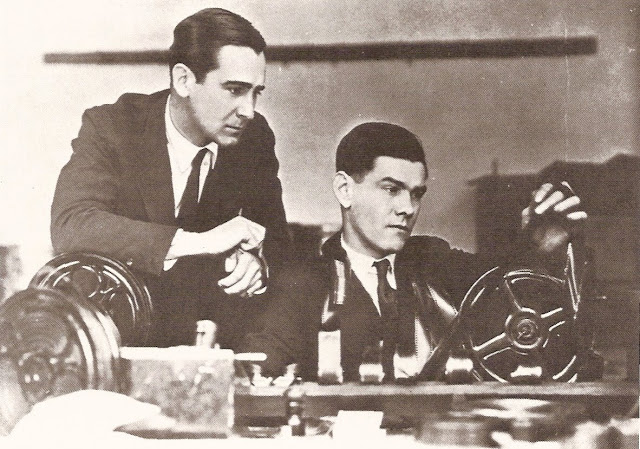 Rex Ingram’s output was impressive while it lasted — 27 pictures in just under 16 years. Unfortunately, few of his pictures are readily available to help us appraise his full career. Many (if not all) of his pre-1920 pictures are lost forever, and others are preserved only in archives and seldom shown. Fortunately — and it is good fortune indeed — the handful to be found on home video are among his best, and preserve the record of a great director at the pinnacle of his career.
Rex Ingram’s output was impressive while it lasted — 27 pictures in just under 16 years. Unfortunately, few of his pictures are readily available to help us appraise his full career. Many (if not all) of his pre-1920 pictures are lost forever, and others are preserved only in archives and seldom shown. Fortunately — and it is good fortune indeed — the handful to be found on home video are among his best, and preserve the record of a great director at the pinnacle of his career.
The Four Horsemen of the Apocalypse, make no mistake, is every bit the masterpiece it was in 1921, and can be shown today to anyone without explanation or apology — anyone, that is, who doesn’t blindly and rigidly refuse to abide silent movies. There’s a reason this one made a star of Valentino (it’s probably still his best performance), but he’s far from the only reason to see it, and not even the best reason at that. Alice Terry (not yet Ingram’s wife) is radiant as Valentino’s married lover, and veteran Joseph Swickard as Valentino’s father gives one of the great performances of the silent era; it is in fact Swickard who carries more of the film than any single player. And over it all is Ingram’s amazing command of pacing, epic sweep, and depth of emotion, while underpinning it is June Mathis’s literate distillation of Blasco Ibañez’s sprawling novel.
Scaramouche (available here in a gorgeous transfer from the Warner Archive) has nearly the epic sweep of Four Horsemen, and John Seitz’s camerawork is little short of astonishing. Rafael Sabatini’s novel is faithfully and intelligently followed (unlike the 1952 remake, which made major changes), and the settings, costumes and faces of the characters have the realism of a trip in a time machine to Revolutionary France.
The Prisoner of Zenda, at least in the version I’ve been able to track down, does murky damage to Seitz’s photography, but Ingram’s subtlety, eye for detail and sense of pace survive, as does Lewis Stone’s performance in the lead (Ronald Colman obviously emulated him in the 1937 remake) and Ramon Novarro’s delightful turn as the likeable villain Rupert of Hentzau.
In the final analysis — and I admit, this is the rankest barstool psychology — I think Rex Ingram was an artist who fought against the constraints of the nascent studio system without realizing how much its support and resources helped him achieve what he was after. He worked best at the controls of a well-oiled machine with a complement of crack mechanics who understood how the machine worked and where Ingram wanted it to go. At its best, that machine and that crew gave shape to what Michael Powell called “Rex’s extravagant dreams”; when the crew started to fall away and Ingram tried to do more of the work alone or with substitutes, then came what Powell in the same sentence called his “thundering mistakes”.
Ingram had Irish charm, but arrogance as well, and he made enemies as easily as friends (though not as often). When he fell out with June Mathis, I’m sure it never occurred to him that it might backfire later on. And when she was mulling who would direct Ben-Hur, I suspect he thought something like, I’m the best choice for this job and she knows it. When Mathis chose Charles Brabin, he probably thought Mathis was being petty and vindictive and — maybe even — just like a woman. This created such a disgust in him — that she would wound him and the picture, simply out of spite — that it drove him out of Hollywood altogether, as far as he could go and still breathe the air.
In Nice he found a studio where, he thought, he needn’t wrangle with or truckle to anyone, smaller and more manageable than the factories that were coalescing in Hollywood, more like the heady, footloose atmosphere at Edison and Vitagraph where he started, but better equipped and up to date. But there was still wrangling to be done, and what he thought of as truckling we might now call networking. Off there in the Mediterranean, to the moguls back in Hollywood he was out of sight, out of mind. MGM indulged him because his movies were good, even excellent. And while there were no more blockbusters like Four Horsemen, there were no calamities either; his pictures made money, and even the least successful (The Magician) broke even. But when his time-out was up and Ingram still wouldn’t come home and play well with others, Metro-Goldwyn and Mayer sighed and cut him loose. Ingram, for his part, shrugged and got on with his life.
Of course, I could be wrong.
Finally, two quotes. First, Grant Whytock, editor on eleven of Ingram’s best pictures: “Rex worked harder than anyone I’ve ever seen. He used to run to the set.”
And one more from Byron Haskin: “Ingram’s work forecast the coming of finesse in movies. I would rank Ingram as number one director, number one in the business. He had traces of sophistication that were not seen in films, that’s all there was to it. Films were just a child-like, fairy-tale quality about most of them; they were made to entertain, and that’s that. But Ingram got into nuances and values of the story, of the characters that — I don’t really know any other director who reached that deeply.”

And here’s a parting look at the Victorine Studios as Ingram knew them in 1928. They still stand, though much changed, having weathered bankruptcies, fires, and World War II. Hitchcock’s To Catch a Thief was shot there, and Truffaut’s Day for Night, and even Mr. Bean’s Holiday. They are now run by Euro Media Television, the name changed to Studios Riviera. Ownership of the property will revert to the City of Nice in 2018, at which time the property may be cleared, subdivided and redeveloped. Some people say the ghost of Rex Ingram still walks there. They say he doesn’t want the place to close.
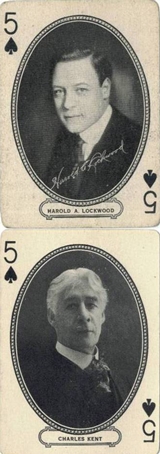
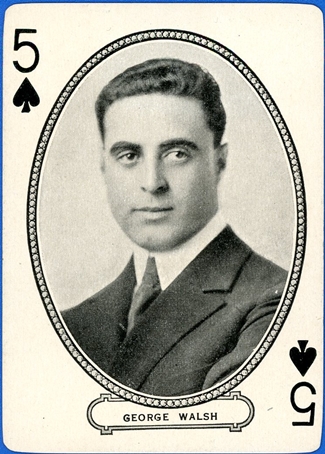
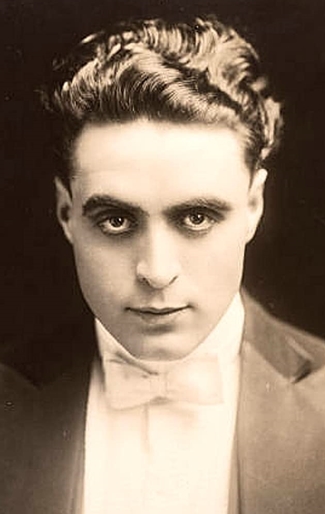 But back to our subject. Born in 1889, George Frederick Walsh followed his older brother Raoul (né Albert Edward) into pictures in the mid-1910s, having originally planned to be an attorney (he attended, however briefly, Fordham and Georgetown). He also attended New York’s High School of Commerce, where he graduated in 1911, and where he was a versatile athlete: baseball, track, cross country, swimming, rowing. This experience would stand him in good stead, at least in the Hollywood short run — certainly better than whatever he learned about commerce or pre-law.
But back to our subject. Born in 1889, George Frederick Walsh followed his older brother Raoul (né Albert Edward) into pictures in the mid-1910s, having originally planned to be an attorney (he attended, however briefly, Fordham and Georgetown). He also attended New York’s High School of Commerce, where he graduated in 1911, and where he was a versatile athlete: baseball, track, cross country, swimming, rowing. This experience would stand him in good stead, at least in the Hollywood short run — certainly better than whatever he learned about commerce or pre-law.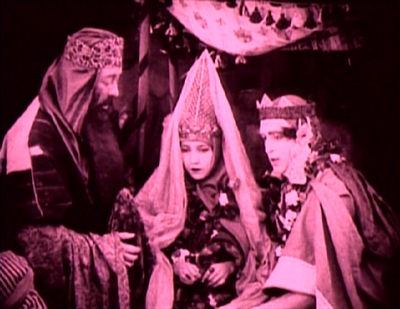 George did get his first breaks in Reliance-Mutual pictures directed by Raoul and others, moving up the cast list till he was top-billed, and first drawing the eye of Variety’s reviewer in Raoul’s Blue Blood and Red (1916): “The kid is clever…a fine, manly looking chap, full of athletic stunts…” By this time, both Raoul and George were working for William Fox, and soon George worked again for D.W. Griffith. Here he is as the Bridegroom of Cana in the Judean Story section of Intolerance, receiving the bad news that the wine supply has run out. With him are 17-year-old Bessie Love (still several years from her own stardom) as the Bride of Cana and William Brown as the father of the bride.
George did get his first breaks in Reliance-Mutual pictures directed by Raoul and others, moving up the cast list till he was top-billed, and first drawing the eye of Variety’s reviewer in Raoul’s Blue Blood and Red (1916): “The kid is clever…a fine, manly looking chap, full of athletic stunts…” By this time, both Raoul and George were working for William Fox, and soon George worked again for D.W. Griffith. Here he is as the Bridegroom of Cana in the Judean Story section of Intolerance, receiving the bad news that the wine supply has run out. With him are 17-year-old Bessie Love (still several years from her own stardom) as the Bride of Cana and William Brown as the father of the bride.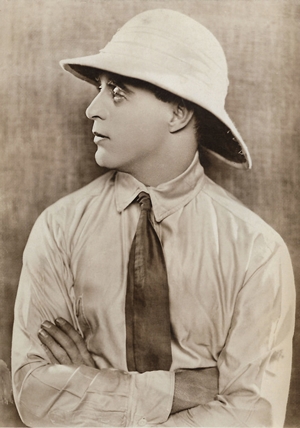 “Walsh is in his glory scaling walls, climbing trees, foiling cops, etc. There are a couple of corking fights where he handles anywhere from a dozen to twenty opponents at a time”; From Now On (’20), “What may be held up for approval is the hard work which George Walsh invests in it.” The image conjured up from these reviews is a series of lightweight adventures distinguished by George’s prowess; as brother Raoul, who directed From Now On, said years later, “Well, anything with him wouldn’t be too heavy.”
“Walsh is in his glory scaling walls, climbing trees, foiling cops, etc. There are a couple of corking fights where he handles anywhere from a dozen to twenty opponents at a time”; From Now On (’20), “What may be held up for approval is the hard work which George Walsh invests in it.” The image conjured up from these reviews is a series of lightweight adventures distinguished by George’s prowess; as brother Raoul, who directed From Now On, said years later, “Well, anything with him wouldn’t be too heavy.”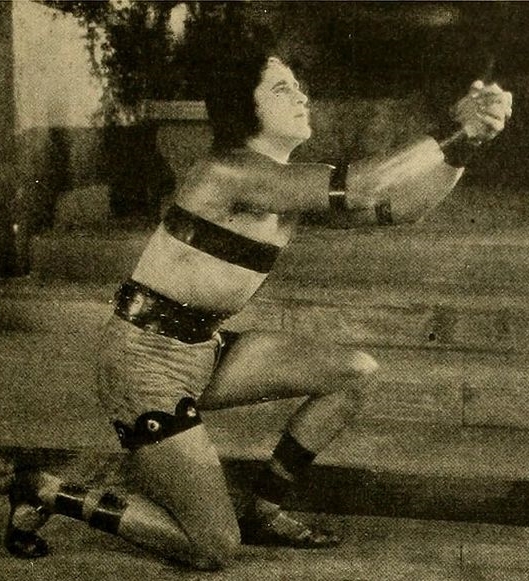 Then came what looked like the break of a lifetime: George Walsh was chosen by writer June Mathis to play the title role in Metro’s screen adaptation of Ben-Hur, to be shot on location in Rome. The role was coveted by every actor in movies except Jackie Coogan. The most popular choice, Rudolph Valentino, was out of play because of a contract dispute with Famous Players-Lasky; until they settled their differences, the studio wasn’t about to let him work for anyone else. Mathis ordered tests, dozens of them, and Walsh won out. In his recounting of the Ben-Hur production in The Parade’s Gone By, Kevin Brownlow tells us that there was little enthusiasm in Hollywood for the choice; George was a fine physical specimen, they all said, but not that strong an actor.
Then came what looked like the break of a lifetime: George Walsh was chosen by writer June Mathis to play the title role in Metro’s screen adaptation of Ben-Hur, to be shot on location in Rome. The role was coveted by every actor in movies except Jackie Coogan. The most popular choice, Rudolph Valentino, was out of play because of a contract dispute with Famous Players-Lasky; until they settled their differences, the studio wasn’t about to let him work for anyone else. Mathis ordered tests, dozens of them, and Walsh won out. In his recounting of the Ben-Hur production in The Parade’s Gone By, Kevin Brownlow tells us that there was little enthusiasm in Hollywood for the choice; George was a fine physical specimen, they all said, but not that strong an actor.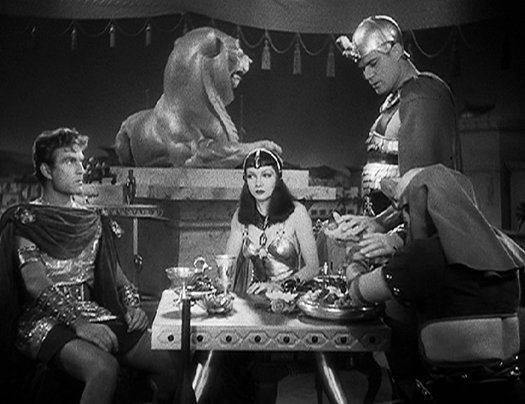

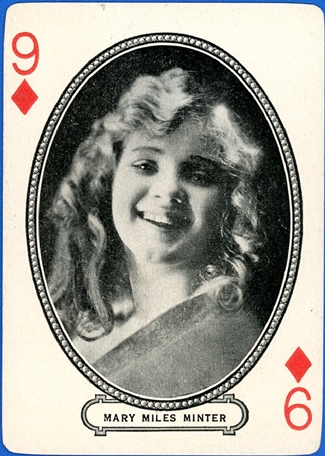
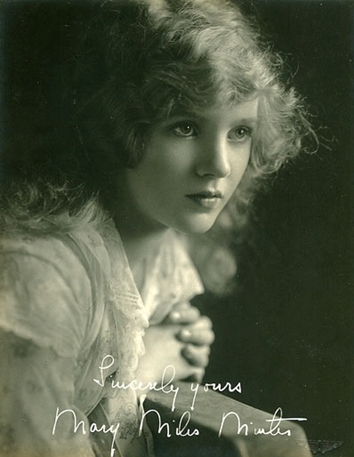
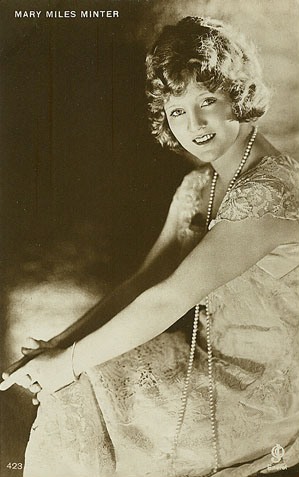
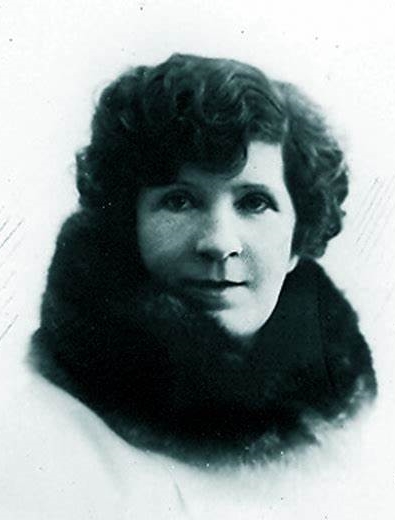 And so did Charlotte. Somebody made up a nursery rhyme:
And so did Charlotte. Somebody made up a nursery rhyme: 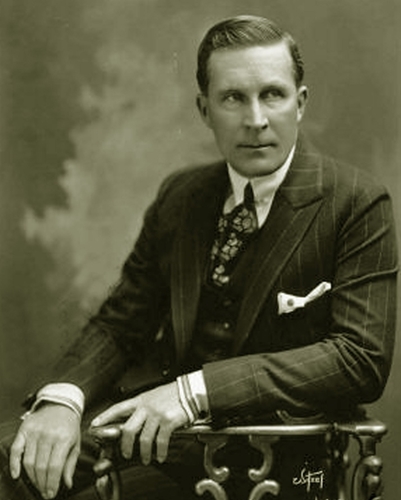
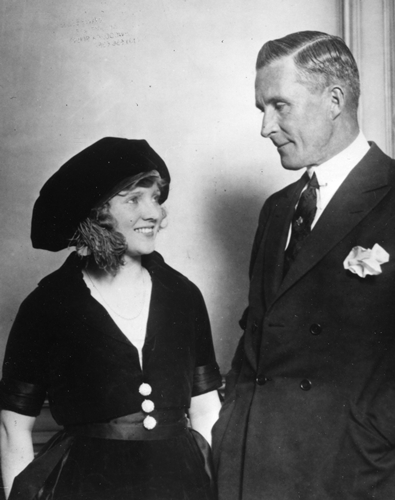
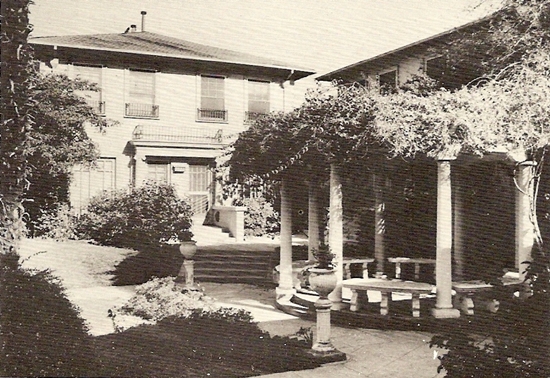 He may have had other effects on her as well, and that possibility came to light only after the evening of Wednesday, February 1, 1922. On that night, sometime after 7:45 p.m., in the living room of this bungalow at 404-B Alvarado Street in Los Angeles, somebody stood behind William Desmond Taylor and shot him dead with a .38-caliber Smith & Wesson revolver.
He may have had other effects on her as well, and that possibility came to light only after the evening of Wednesday, February 1, 1922. On that night, sometime after 7:45 p.m., in the living room of this bungalow at 404-B Alvarado Street in Los Angeles, somebody stood behind William Desmond Taylor and shot him dead with a .38-caliber Smith & Wesson revolver.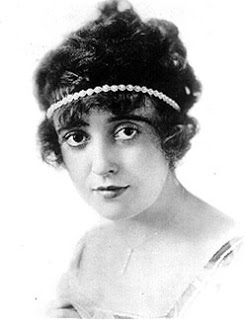
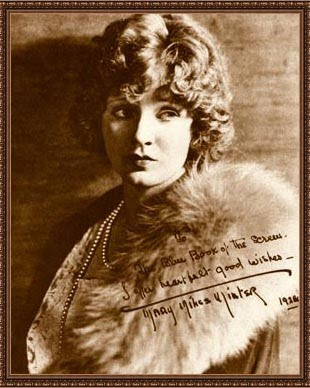
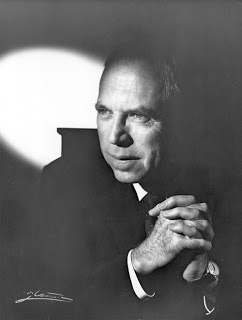
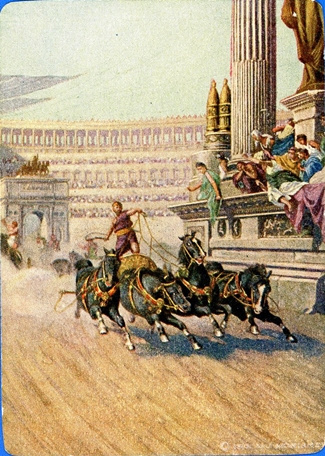
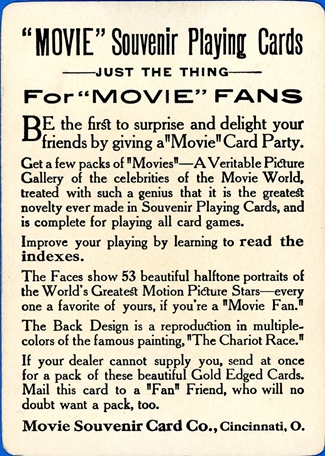 Try to imagine a time when a deck of cards with movie star pictures was a novelty. It’s not easy, is it? We can hardly even imagine a time when a movie star was such a novelty that the word “movie” itself was in quotes. But here it is, courtesy of one M.J. Moriarty and the Movie Souvenir Card Co. of Cincinnati, Ohio.
Try to imagine a time when a deck of cards with movie star pictures was a novelty. It’s not easy, is it? We can hardly even imagine a time when a movie star was such a novelty that the word “movie” itself was in quotes. But here it is, courtesy of one M.J. Moriarty and the Movie Souvenir Card Co. of Cincinnati, Ohio.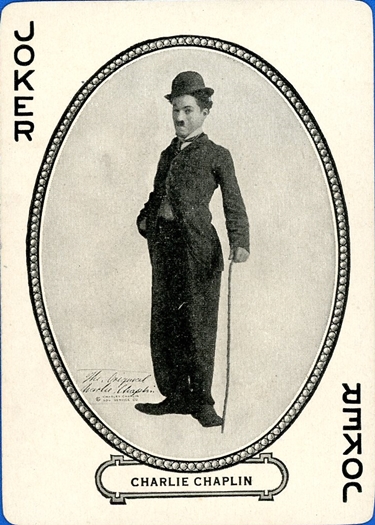
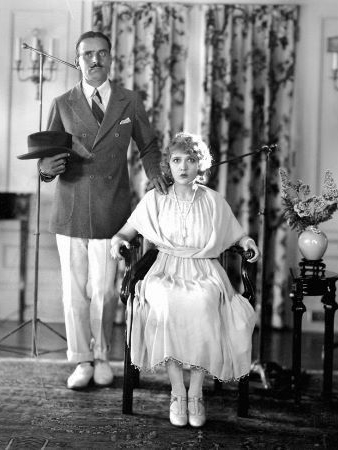
 Von Wagner painted at least three versions of the painting, the first one in 1873 for the Vienna Exposition. A second version went on display at Philadelphia’s Centennial Exposition in 1876, and another — or perhaps the same one — at the 1893 Columbian Exposition in Chicago. The painting sparked a national craze, with etchings and lithograph prints for sale everywhere. Contrary to what some have said, it does not reproduce a scene from Ben-Hur, which wasn’t published until 1880; indeed, the painting and its pop-culture clones may have inspired Gen. Lew Wallace to include such a scene in his novel. In point of fact, the full title of the work is “Chariot Race in the Circus Maximus, Rome, in the Presence of the Emperor Domitian”, which would have been several decades after Judah Ben-Hur and Messala had their fateful showdown in Antioch’s Circus Maximus. Only one of von Wagner’s versions of the painting is known to survive; it hangs today in the Manchester Art Gallery in England.
Von Wagner painted at least three versions of the painting, the first one in 1873 for the Vienna Exposition. A second version went on display at Philadelphia’s Centennial Exposition in 1876, and another — or perhaps the same one — at the 1893 Columbian Exposition in Chicago. The painting sparked a national craze, with etchings and lithograph prints for sale everywhere. Contrary to what some have said, it does not reproduce a scene from Ben-Hur, which wasn’t published until 1880; indeed, the painting and its pop-culture clones may have inspired Gen. Lew Wallace to include such a scene in his novel. In point of fact, the full title of the work is “Chariot Race in the Circus Maximus, Rome, in the Presence of the Emperor Domitian”, which would have been several decades after Judah Ben-Hur and Messala had their fateful showdown in Antioch’s Circus Maximus. Only one of von Wagner’s versions of the painting is known to survive; it hangs today in the Manchester Art Gallery in England. 

 In 1937, Capra gave Warner the opportunity to deliver probably his best screen performance. The picture was Lost Horizon, from James Hilton’s utopian romance about a group of refugees from war-torn “civilization” who find themselves in the remote Himalayan paradise of Shangri-La. Warner (here with Isabel Jewell, Edward Everett Horton, Ronald Colman and Thomas Mitchell) played Chang, their mysterious escort from the snowbound wreck of their plane to the Edenic Valley of the Blue Moon, and their host after they arrive. Endlessly cordial, welcoming and polite, he nevertheless is inscrutably vague about when and how they will ever be able to return to their homes. Warner got an Oscar nomination as best supporting actor, but he didn’t win; he lost out to Joseph Schildkraut as Alfred Dreyfus in Warner Bros.’ The Life of Emile Zola. That’s a worthy performance, but I’m not at all sure the Academy made the right call. H.B. Warner’s other pictures for Capra were You Can’t Take It with You (1938), Mr. Smith Goes to Washington (1939, as the Senate majority leader) and Here Comes the Groom (1951).
In 1937, Capra gave Warner the opportunity to deliver probably his best screen performance. The picture was Lost Horizon, from James Hilton’s utopian romance about a group of refugees from war-torn “civilization” who find themselves in the remote Himalayan paradise of Shangri-La. Warner (here with Isabel Jewell, Edward Everett Horton, Ronald Colman and Thomas Mitchell) played Chang, their mysterious escort from the snowbound wreck of their plane to the Edenic Valley of the Blue Moon, and their host after they arrive. Endlessly cordial, welcoming and polite, he nevertheless is inscrutably vague about when and how they will ever be able to return to their homes. Warner got an Oscar nomination as best supporting actor, but he didn’t win; he lost out to Joseph Schildkraut as Alfred Dreyfus in Warner Bros.’ The Life of Emile Zola. That’s a worthy performance, but I’m not at all sure the Academy made the right call. H.B. Warner’s other pictures for Capra were You Can’t Take It with You (1938), Mr. Smith Goes to Washington (1939, as the Senate majority leader) and Here Comes the Groom (1951).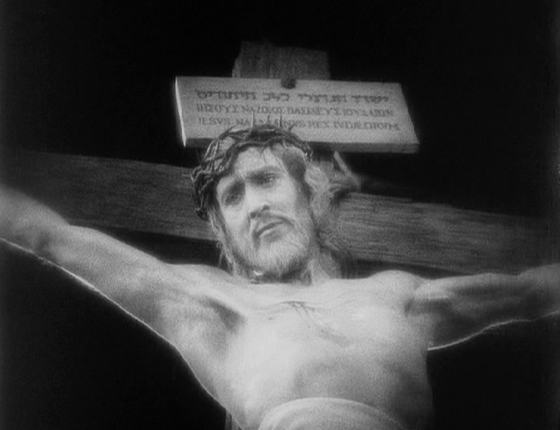
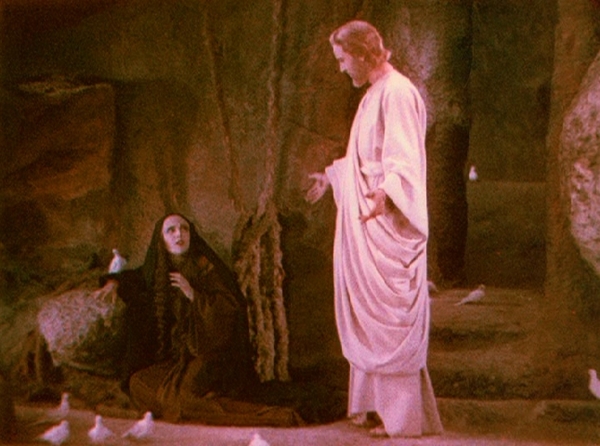
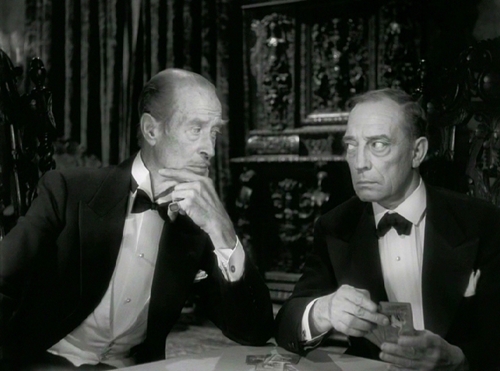
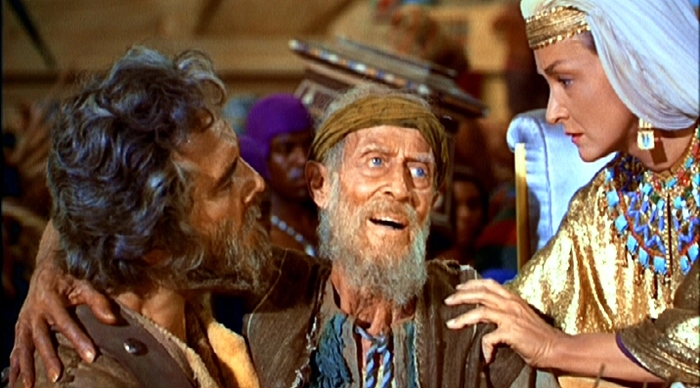 H.B. Warner’s final screen appearance was a poignant one. He was approaching 80 and living at the Motion Picture Country Home in Woodland Hills in 1955 when the call came from his old friend Cecil B. DeMille. DeMille was planning a massive spectacle expanding the Biblical section of his 1923 hit The Ten Commandments, and he had a part for H.B. if he felt up to it. The role was identified in the script as “Amminadab”, an aging Israelite setting out on the Exodus from Egypt, even though he knows he’ll never see the Promised Land — indeed, probably won’t live out the day. The actor carrying him in this shot, Donald Curtis, remembered that Warner weighed no more than a child, and carrying him wasn’t merely in the script, it was a necessity: “It was clear H.B. couldn’t walk — could barely breathe.” He had come to the set in an ambulance and lay on a stretcher, breathing through an oxygen mask, until the cameras were ready to roll. In the script, he had a rather complex speech adapted from Psalm 22, but he couldn’t manage it, so DeMille told him to say whatever he wanted, and Curtis and Nina Foch would work with it. H.B. Warner’s last words in his 137th movie, after 53 years as an actor, were: “I am poured out like water, my strength dried up into the dust of death.”
H.B. Warner’s final screen appearance was a poignant one. He was approaching 80 and living at the Motion Picture Country Home in Woodland Hills in 1955 when the call came from his old friend Cecil B. DeMille. DeMille was planning a massive spectacle expanding the Biblical section of his 1923 hit The Ten Commandments, and he had a part for H.B. if he felt up to it. The role was identified in the script as “Amminadab”, an aging Israelite setting out on the Exodus from Egypt, even though he knows he’ll never see the Promised Land — indeed, probably won’t live out the day. The actor carrying him in this shot, Donald Curtis, remembered that Warner weighed no more than a child, and carrying him wasn’t merely in the script, it was a necessity: “It was clear H.B. couldn’t walk — could barely breathe.” He had come to the set in an ambulance and lay on a stretcher, breathing through an oxygen mask, until the cameras were ready to roll. In the script, he had a rather complex speech adapted from Psalm 22, but he couldn’t manage it, so DeMille told him to say whatever he wanted, and Curtis and Nina Foch would work with it. H.B. Warner’s last words in his 137th movie, after 53 years as an actor, were: “I am poured out like water, my strength dried up into the dust of death.” 


